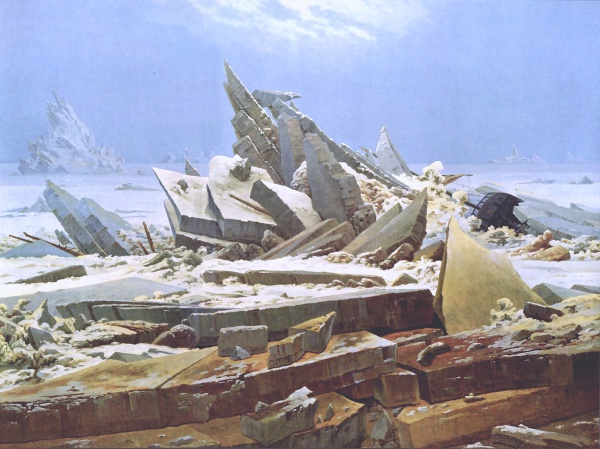Facts About The Sea of Ice
"The Sea of Ice" also known as "The Wreck of Hope" is an oil painting by the German Romantic artist Caspar David Friedrich, created between 1823 and 1824. This dramatic piece depicts a shipwreck amidst a shattered ice sheet, with towering ice shards that resemble tombstones reaching into the sky. The wrecked ship is believed to be the HMS Griper, one of the vessels from William Edward Parry's North Pole expeditions.
Originally, Friedrich exhibited this work in 1822 under the title "A Wrecked Ship off the Coast of Greenland in the Moonlight. Own Invention." By 1824, it was presented as "An Idealized Scene of an Arctic Sea, with a Wrecked Ship on the Heaped Masses of Ice." In his estate, Friedrich referred to it as "Ice Picture. The Disaster-stricken North Pole Expedition."
The painting emerged when Johann Gottlob von Quandt commissioned Friedrich to create a piece symbolizing the north. Friedrich drew inspiration from accounts of North Pole expeditions, particularly Parry's 1819-1820 journey. While initially met with mixed reviews due to its bold composition, "The Sea of Ice" gained recognition after Friedrich's death.
Over the years, this painting has influenced many artists and architects. It shaped the arctic landscapes of Lawren Harris and directly inspired Paul Nash’s painting "Totes Meer." It is considered a key example of the "Arctic Sublime" and has influenced various polar artworks. Architect Thom Mayne cites it as a significant influence on his ideas about the relationship between architecture, landscape, and nature. There are even suggestions that the painting inspired the design of the Sydney Opera House.
In 2010, the enduring impact of Friedrich’s work was highlighted with the unveiling of Monica Bonvicini’s sculpture "She Lies" in the Oslo fjord near the Oslo Opera House. This three-dimensional interpretation of "The Sea of Ice" has become a popular tourist attraction, demonstrating the lasting legacy of Friedrich's masterpiece.

 Czech Republic
Czech Republic